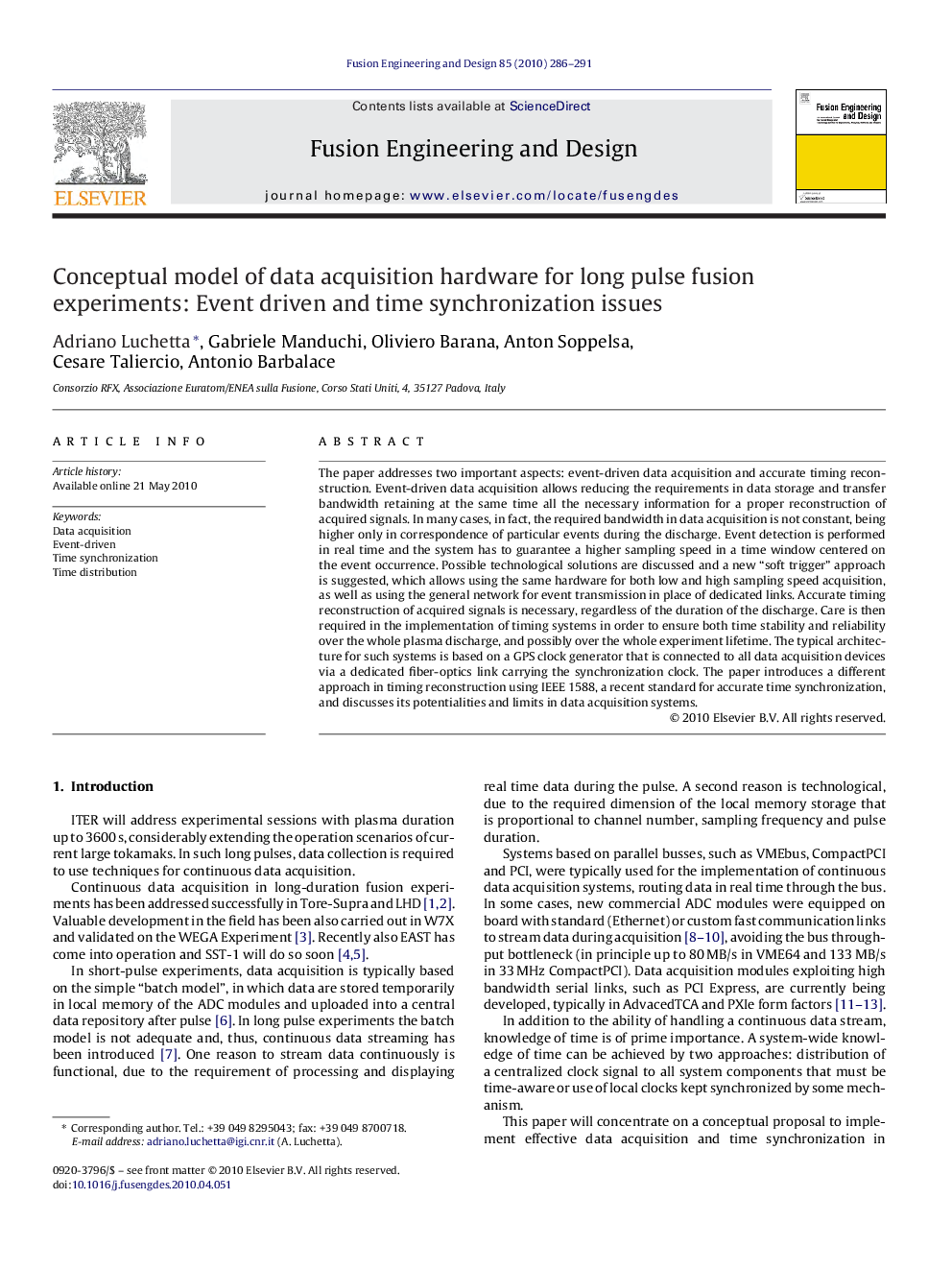| Article ID | Journal | Published Year | Pages | File Type |
|---|---|---|---|---|
| 272310 | Fusion Engineering and Design | 2010 | 6 Pages |
The paper addresses two important aspects: event-driven data acquisition and accurate timing reconstruction. Event-driven data acquisition allows reducing the requirements in data storage and transfer bandwidth retaining at the same time all the necessary information for a proper reconstruction of acquired signals. In many cases, in fact, the required bandwidth in data acquisition is not constant, being higher only in correspondence of particular events during the discharge. Event detection is performed in real time and the system has to guarantee a higher sampling speed in a time window centered on the event occurrence. Possible technological solutions are discussed and a new “soft trigger” approach is suggested, which allows using the same hardware for both low and high sampling speed acquisition, as well as using the general network for event transmission in place of dedicated links. Accurate timing reconstruction of acquired signals is necessary, regardless of the duration of the discharge. Care is then required in the implementation of timing systems in order to ensure both time stability and reliability over the whole plasma discharge, and possibly over the whole experiment lifetime. The typical architecture for such systems is based on a GPS clock generator that is connected to all data acquisition devices via a dedicated fiber-optics link carrying the synchronization clock. The paper introduces a different approach in timing reconstruction using IEEE 1588, a recent standard for accurate time synchronization, and discusses its potentialities and limits in data acquisition systems.
